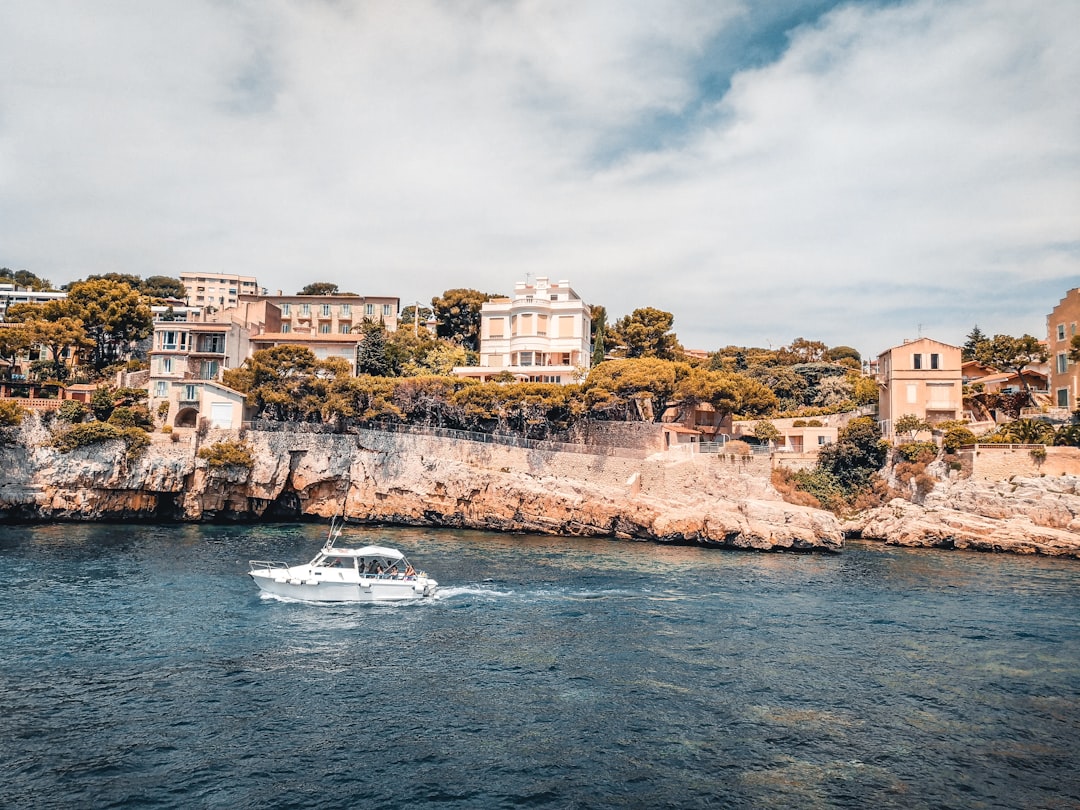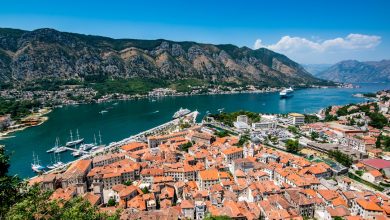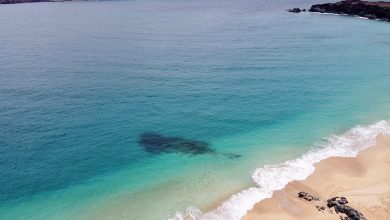
Embarking on a journey to the Côte d’Azur requires more than a simple itinerary; it calls for immersing oneself into the lavish lifestyle and picturesque landscapes that define this coastal haven. Our comprehensive French Riviera Travel Guide is your key to unlocking the region’s most captivating secrets. From historic marvels to the sparkling azure waters that hug the Mediterranean coastline, each paragraph you traverse in this guide will draw you closer to the quintessential charm of the French Riviera. Whether you’re seeking a serene escape or an adventure steeped in cultural richness, let’s set sail into the heart of the Côte d’Azur together.
Exploring the Allure of the French Riviera: An Overview
The French Riviera, or Côte d’Azur, is a destination synonymous with elegance, glamour, and breathtaking natural beauty. This famed stretch of coastline, nestled in the southeast corner of France, beckons travelers with its promise of azure waters, year-round sunshine, and an unmistakable touch of luxury. To fully appreciate its charm, a comprehensive French Riviera Travel Guide is essential for any discerning traveler.
Firstly, the allure of this Mediterranean haven is deeply rooted in its diverse landscapes. From the soft, sandy beaches of Cannes to the rugged cliffs of the Esterel Massif, the Riviera caters to a range of preferences, whether you’re seeking relaxation or adventure.
Moreover, the Côte d’Azur boasts a rich cultural tapestry:
- Artistic Pedigree: With a history that has captured the hearts of artists such as Picasso and Matisse, the region is dotted with museums and galleries.
- Architectural Gems: From Belle Époque villas to modernist masterpieces, the architecture here tells the story of a region that has always been at the vanguard of style.
- Glamorous Hotspots: Iconic cities like Nice, St. Tropez, and the principality of Monaco offer a glimpse into the high life, with their luxury yachts, casinos, and exclusive parties.
The French Riviera Travel Guide would not be complete without acknowledging the region’s temperate climate. With over 300 days of sunshine per year, the weather sets a perfect scene for leisurely exploration. Visitors will find that any time is a good time for a stroll along the Promenade des Anglais or a hike in the Mercantour National Park.
Indeed, understanding the essence of the French Riviera involves recognizing its ability to mix the traditional with the contemporary, to blend the natural with the man-made, and to offer an experience that is both restorative and exhilarating. As we delve deeper into this guide, each aspect of traveling along the Riviera will be unveiled, providing you with the knowledge to embark on an unforgettable journey.

Delving into the History of the Côte d’Azur
The history of the French Riviera, also known as the Côte d’Azur, is as captivating as its sparkling coastline. As a cornerstone of our French Riviera Travel Guide, understanding the region’s past enriches any visit.
Originally a winter resort for the British upper class in the 18th century, the French Riviera quickly became the quintessential retreat for aristocrats and wealthy tourists. By the 19th century, luminaries like Queen Victoria and writer F. Scott Fitzgerald were drawn to its mild climate and picturesque scenery. But it wasn’t just the elite who enjoyed the Riviera’s charms; artists such as Pablo Picasso and Henri Matisse found inspiration in the shimmering light and vibrant colors of this Mediterranean haven.
The area has seen the rise and fall of various influences, with historic ties to the Greek and Roman empires evident in ruins and architecture. The region also played a strategic role in military history with the notable presence of fortifications and the influences of the various wars that swept over Europe.
Here’s a quick comparison of the historical timeline of the French Riviera:
| Era | Influence | Legacy |
|---|---|---|
| Antiquity | Greek colonies, Roman settlements | Ancient ruins, amphitheaters |
| Middle Ages | Various marquisates and kingdoms | Medieval villages, castles |
| 18th Century | British and Russian aristocracy | Winter resorts, promenades |
| 19th Century | Belle Époque, artistic movements | Luxury hotels, art museums |
| 20th Century | Development of tourism, film industry | Cannes Film Festival, modern amenities |
Today, the French Riviera merges its rich history with modern luxury, making it a timeless destination. As you explore the region, you’ll discover that each town along the coast and in the hinterlands harbors its own unique tales woven into the fabric of the Côte d’Azur’s narrative—a true testament to the area’s enduring allure detailed throughout this French Riviera Travel Guide.
Must-Visit Destinations Along the French Riviera
When using this French Riviera Travel Guide, you’ll find there are several iconic destinations you simply cannot miss. Each offers a unique blend of glamour, culture, and breathtaking scenery. Here’s a succinct overview of the places that should feature on your itinerary:
- Nice: The quintessential Riviera city, Nice, is renowned for its charming Old Town, the Promenade des Anglais, and the stunning coastline. Stroll along the beachfront, or meander through the Cours Saleya market to experience local flavors.
- Cannes: Famous for its international film festival, Cannes offers more than just the allure of celebrity. Visit Le Suquet, the old quarter, for panoramic views or relax on one of the city’s many public beaches.
- Monaco: The tiny principality is packed with attractions like the Monte Carlo Casino, plush gardens, and the Prince’s Palace. It’s a hub of luxury and also fascinating for its mix of modern living and medieval history.
- St. Tropez: Once a fishermen’s village, now a playground for the rich and famous, St. Tropez is synonymous with high-end luxury. Don’t miss the beautiful beaches like Pampelonne and the animated nightlife.
- Antibes: Known for the Picasso Museum, housed in the seafront Château Grimaldi, Antibes is also home to a lovely Old Town and the opulent Port Vauban, a favorite docking spot for spectacular yachts.
- Èze: For a medieval journey, the hilltop village of Èze offers winding streets, artisanal shops, and the stunning Jardin Exotique with views over the Mediterranean Sea.
Each destination along the French Riviera comes with its unique ambiance and attractions. While exploring these must-visit spots, you will uncover the essence of the Côte d’Azur and understand why it remains a magnet for travelers worldwide. Keep this French Riviera Travel Guide at hand as you embark on a journey filled with discovery, luxury, and unparalleled beauty.
The Best Time to Visit the French Riviera
Deciding on the perfect time to visit this glamorous coastline is a crucial aspect of planning your trip. The French Riviera Travel Guide can attest that each season offers distinct experiences, catering to the different tastes of travelers. So, let’s break down the seasons to help you choose when to embark on your Côte d’Azur adventure.
- Spring (April to June):
- Pros: The weather starts to warm up, and the crowds are fewer than in summer. This is a great time to explore the outdoor markets or attend the Cannes Film Festival.
- Cons: The sea may still be too chilly for a swim.
- Summer (July to August):
- Pros: Ideal for sun-seekers and beachgoers. The water is warm, and the nightlife is vibrant. Also, many festivals and events occur during this period.
- Cons: This is peak tourist season, leading to crowded attractions and higher prices.
- Autumn (September to October):
- Pros: The weather is still pleasant, and the water warm enough to enjoy. Autumn also brings the regattas and the Nice Jazz Festival.
- Cons: Some attractions may start to reduce their hours as the tourist season winds down.
- Winter (November to March):
- Pros: Perfect for those looking for a quiet and more affordable holiday. Winter on the Riviera is mild, making it a favorite for many Europeans escaping the cold.
- Cons: Some restaurants and shops may be closed, and the sea is generally too cold for swimming.
Here is a quick glance at the advantages of visiting during different times of the year:
| Season | Highlights |
|---|---|
| Spring | Mild weather, fewer tourists, Cannes Film Festival |
| Summer | Warm beaches, vibrant nightlife, numerous festivals |
| Autumn | Warm sea temperatures, cultural events |
| Winter | Quieter atmosphere, mild temperatures |
In the French Riviera Travel Guide, it is often recommended that the best time to visit is during the shoulder seasons of spring and autumn. This sweet spot offers the warmth of the summer with fewer crowds, allowing you to savor the charm and elegance of the French Riviera in relative peace. Whether you’re hoping to bask in the luxurious summer sun or enjoy the tranquil allure of the shoulder seasons, planning your trip according to your preferences will ensure a memorable stay.

Navigating Transportation on the Côte d’Azur
Embarking on a journey to the French Riviera—a haven of azure seas, golden beaches, and glamorous towns—requires knowledge of its transportation system. This section of your French Riviera Travel Guide helps you navigate the transit options to explore this Mediterranean paradise with ease.
- By Air: The major airport in the region is Nice Côte d’Azur International Airport, serving as the gateway to the French Riviera. It has extensive connections to major European cities and beyond.
- By Train: The train is a scenic and convenient way to travel along the coast. The SNCF network connects all the major towns including Nice, Cannes, Monaco, and Antibes. The high-speed TGV train makes trips from Paris to Nice manageable and enjoyable.
- By Car: Hiring a car offers flexibility to move along the Riviera at your own pace. However, be mindful of the traffic during peak tourist seasons and the cost of parking, which can be steep in popular areas.
- Public Transport: The Côte d’Azur offers a network of buses that connect all the main spots along the coast at an affordable price.
- Tip: To save money, look for day or week passes that offer unlimited travel within certain zones.
- By Boat: Consider the maritime shuttle services for a unique perspective on the Riviera. Services operate between locations such as Cannes, Saint-Tropez, and the islands of Lérins.
| Transportation Mode | Pros | Cons |
|---|---|---|
| Air | Fastest way to arrive; global links | Can be pricey; airport transfers needed |
| Train | Scenic; efficient | Can be crowded; occasional delays |
| Car | Flexibility; personal space | Traffic; parking issues |
| Public Transport | Economical; local experience | Less frequent; slower than driving |
| Boat | Unique views; avoids road traffic | Subject to weather; limited schedule |
In conclusion, navigating through the Côte d’Azur can be a seamless part of your adventure, whether you prefer the cost-efficient bus system or the autonomy of a private car. Each mode of transportation provides a different experience of the Riviera, adding to the richness of your holiday. This French Riviera Travel Guide encourages you to explore these options and choose the one that best aligns with your travel preferences.
Culinary Delights: Where to Eat on the French Riviera
When traversing the sun-kissed terrain of the French Riviera, your senses will be tantalized not only by the lush scenery but also by the region’s delectable cuisine. The French Riviera Travel Guide would be remiss without spotlighting the culinary hotspots that dot the coastline, offering dining experiences that range from indulgent Michelin-starred restaurants to quaint seaside bistros.
Michelin-Star Magic
- La Chèvre d’Or (Eze): For a meal overlooking the Mediterranean, this two-star Michelin restaurant serves innovative dishes.
- Mirazur (Menton): Crowned number one in The World’s 50 Best Restaurants in 2019, it’s a pilgrimage site for gourmands worldwide.
Casual Chic Eateries
- Le Safari (Nice): Nestled in the vibrant Cours Saleya market, perfect for sampling Niçoise salads and fresh seafood.
- La Tarte Tropézienne (Saint-Tropez): Famous for its namesake dessert, it offers a sweet pause from your adventures.
Budget-Friendly Bites
- Chez Pipo (Nice): Dive into the local ambiance and enjoy some of the best socca, a chickpea flour crepe that’s a Nice specialty.
- Market Stalls (Various Locations): Wander through any open-air market, and you’ll find a plethora of freshly made dishes at a fraction of restaurant prices.
Timing your visit to coincide with lunch or dinner can add a scrumptious layer to your French Riviera travel escapade. Here’s a quick comparison of different dining options suited for varying budgets:
| Dining Option | Price Range | Experience |
|---|---|---|
| Michelin-Starred | High ($$$$) | Luxe & Gourmet |
| Casual Chic | Moderate ($$) | Relaxed & Trendy |
| Budget-Friendly | Low ($) | Local & Authentic |
Remember that dining on the Côte d’Azur isn’t just about sustenance; it’s an integral part of the regional culture. From the catch of the day served on a scenic terrace to a sweet treat savored on a cobblestoned street, each meal is a chapter in your French Riviera Travel Guide story. Savor each bite as you indulge in the rich tapestry of flavors that this famed coastline has to offer.
Accommodation Options: From Luxury to Budget-Friendly
When planning a trip to the French Riviera, finding the right accommodation is key to enjoying your stay. The Côte d’Azur boasts a wide array of lodging options to cater to every traveler’s needs and budget, creating the perfect backdrop for any French Riviera travel guide.
- Luxury Hotels: For those looking to indulge in opulence, the French Riviera is renowned for its luxury hotels. Palatial rooms, gourmet dining, and pristine beachfronts are but a glimpse of what these establishments offer. Hotels like the Hotel Negresco in Nice and the Hôtel de Paris in Monte-Carlo exemplify the grandeur that the Riviera is known for.
- Boutique Hotels: Art lovers and those seeking a more personalized experience may gravitate towards boutique hotels. These stylish options are often situated in charming locales and offer unique artistic decor and attentive service, providing a distinctly Côte d’Azur flavor.
- Vacation Rentals: For travelers preferring a home away from home, vacation rentals range from beachfront villas to quaint apartments in the heart of historic towns. Renting places you in the midst of local life and often provides more space and amenities.
- Budget-Friendly Hostels: Backpackers and budget-conscious visitors are not left out. Hostels such as Villa Saint Exupery Beach in Nice offer affordable beds in dormitories or private rooms and are a hub for meeting fellow travelers.
- Campgrounds: Embracing the Mediterranean’s great outdoors is another option. With campgrounds like Parc Saint James Oasis Village, you can stay close to nature without sacrificing comfort.
When incorporating these accommodation options into your French Riviera travel guide, consider the proximity to major attractions, the type of experience desired, and, of course, your budget. No matter the choice, the charm of the French Riviera will ensure a memorable stay.
In summary:
| Accommodation Type | Pros | Cons |
|---|---|---|
| Luxury Hotels | Full amenities, prime locations | Higher cost |
| Boutique Hotels | Unique character, personalized service | Can be pricey |
| Vacation Rentals | More privacy, home-like experience | Requires self-sufficiency |
| Hostels | Affordable, social environment | Less privacy |
| Campgrounds | Natural settings, cost-effective | May lack certain comforts |
Travelers can weave through these categories, finding the perfect balance for their French Riviera travels, making the Côte d’Azur not just a destination, but a home away from home.
Remember to book early, especially in peak seasons, to secure your ideal accommodation. With these insights from your French Riviera travel guide, you’re well on your way to building an exquisite Côte d’Azur itinerary.

Tips for Experiencing the French Riviera Like a Local
When traveling through this jewel of the Mediterranean, you’ll want more than just a glimpse into the luxurious lifestyle of the Côte d’Azur. To truly immerse yourself, consider these tips from our French Riviera Travel Guide, crafted to help you experience the region like a local.
- Learn Some Basic French: Locals appreciate when visitors make the effort to speak their language. Mastering simple greetings or phrases can go a long way in enriching your experience and bonding with residents.
- Visit Local Markets: Instead of dining out for every meal, visit the vibrant local markets. You’ll find fresh produce, artisanal goods, and the opportunity to mingle with locals as you savor regional flavors.
- Avoid Tourist Traps: Research and seek out restaurants and cafes where locals eat. This often means stepping away from the main streets and exploring back alleys where hidden gems await.
- Embrace the Siesta Culture: Many shops and businesses shut down in the afternoon. Use this time to relax on the beach or enjoy a leisurely lunch — just as the locals do.
- Use Public Transit: Buses and trains are an efficient way to travel around the Riviera while avoiding parking hassles. It’s also a great chance to observe daily local life.
To help you compare some local experiences with typical tourist choices, consider the following table:
| Tourist Approach | Local Experience |
|---|---|
| Dining in main square restaurants | Visiting backstreet bistros |
| Buying souvenirs in gift shops | Shopping at local artisan markets |
| Sticking to popular beaches | Exploring secluded local beaches |
| Traveling by taxi or rental car | Using public transportation |
By following these pointers from our French Riviera Travel Guide, you can cultivate a more authentic and memorable experience. Engage with the culture, and you’ll discover the true rhythm of life along the glittering shores of the French Riviera.
Cultural Events and Festivities on the Côte d’Azur
The French Riviera, a stretch of Mediterranean coast that epitomizes luxury and artistic flair, is also a vibrant hub of cultural events and festivities. Throughout the year, an exciting array of events punctuates the calendar, inviting both locals and tourists to indulge in the region’s exuberant lifestyle. If your French Riviera Travel Guide doesn’t include these cultural celebrations, you’re missing out on the true essence of the Côte d’Azur.
- Cannes Film Festival: Perhaps the most prestigious film festival in the world, Cannes brings together the lustrous appeal of cinema with red-carpet glamor. Unlike any other event, it captures the imagination of film lovers and the attention of the international press.
- Nice Carnival: One of France’s largest carnivals, this jubilant event is a feast for the senses with its colorful parades, extravagant floats, and costumed performers. The festivities conclude with the famous ‘Battle of Flowers’, a parade where intricately decorated floats cover the Promenade des Anglais.
- Jazz à Juan: The coastal town of Juan-les-Pins hosts this celebrated music festival, showcasing a mixture of international jazz legends and emerging talents. Vibrant performances breathe life into sultry summer evenings on the Riviera.
- Les Voiles de Saint-Tropez: This regatta marks the end of the Mediterranean yachting season, featuring classic and modern yachts in a week of competitive sailing and festive atmosphere.
- Menton Lemon Festival: An homage to the citrus that thrives here. Uniquely designed sculptures made from lemons and oranges adorn the city during this lively event, attracting visitors from around the globe.
A French Riviera Travel Guide that spotlights these cultural highlights assures that you can plan your visit accordingly, ensuring a taste of the local pride and joie de vivre. Whether you’re a film aficionado, music enthusiast, or admirer of traditional celebrations, the French Riviera’s calendar is brimming with opportunities to immerse yourself in the region’s rich tapestry of events.



